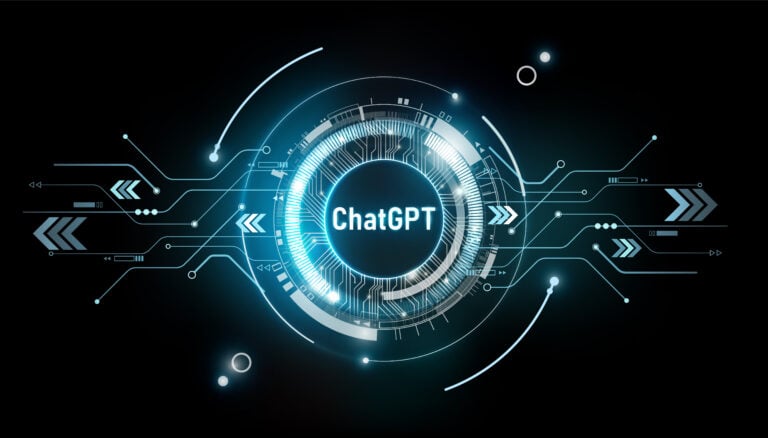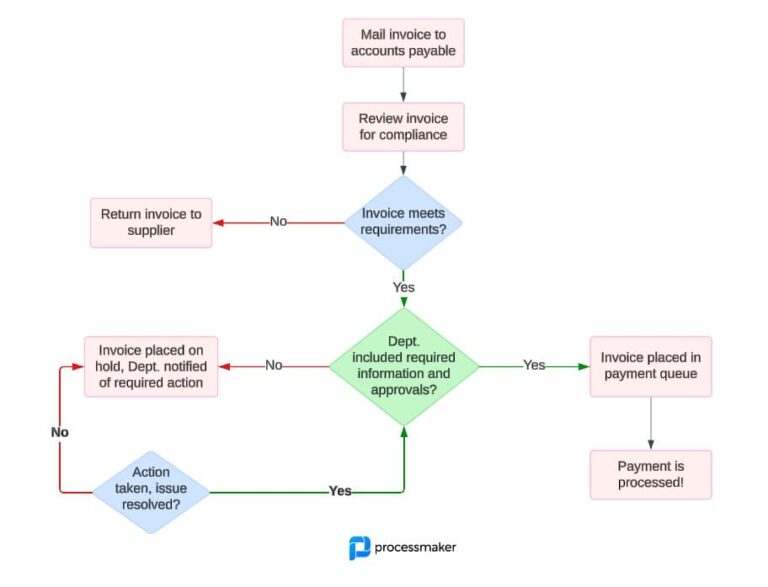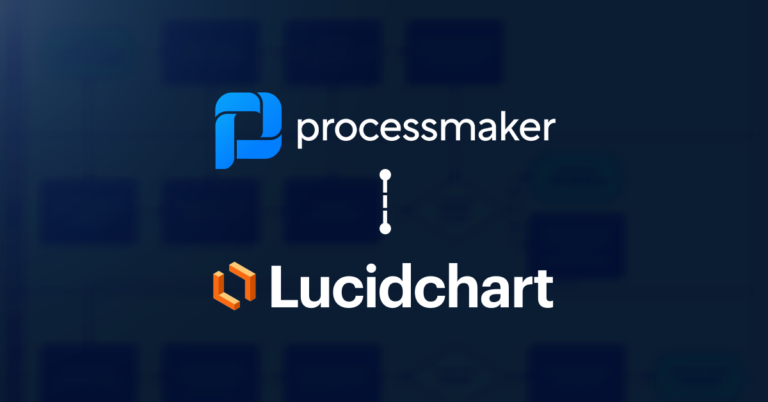Now more than ever, artificial intelligence is being leveraged by companies of all industries and sizes. Whether you’ve heard of ChatGPT or used it yourself, you’ll know that AI has become a game-changer inside the workforce. So let’s talk about some of the ways you can use the platform to your advantage.
In this post, we’ll cover:
- How ChatGPT works and what it does
- How you can leverage ChatGPT for customer service teams
- How ChatGPT can act as your personal assistant
- Analysis for sales and marketing with AI
- AI Employee training
- Content creation with ChatGPT
What is ChatGPT?
The technology can be a personal assistant, brainstorming partner, or rudimentary data analyst. You type up a prompt, and it weaves through an algorithmic version of the road-trip game “20 Questions.” Your words serve as the contextual clues, helping ChatGPT churn through its vast knowledge to predict what information is unrelated and what’s wholly relevant. It then replies conversationally. Ask follow-up questions, define unknown terms, establish tone and voice, or request additional information.
While ChatGPT dazzles us with passable dissertations and bespoke bedtime stories, bear in mind it’s a massive experiment in dice-rolling. As a predictive technology, it guesses the next best thing to say, just like your email app attempts to finish your sentences. Deciding which use cases to implement involves a deep understanding of your organization and your customers. Paring down the list of potential applications can feel overwhelming—so here are five uses for ChatGPT that can benefit businesses of all sizes and industries.
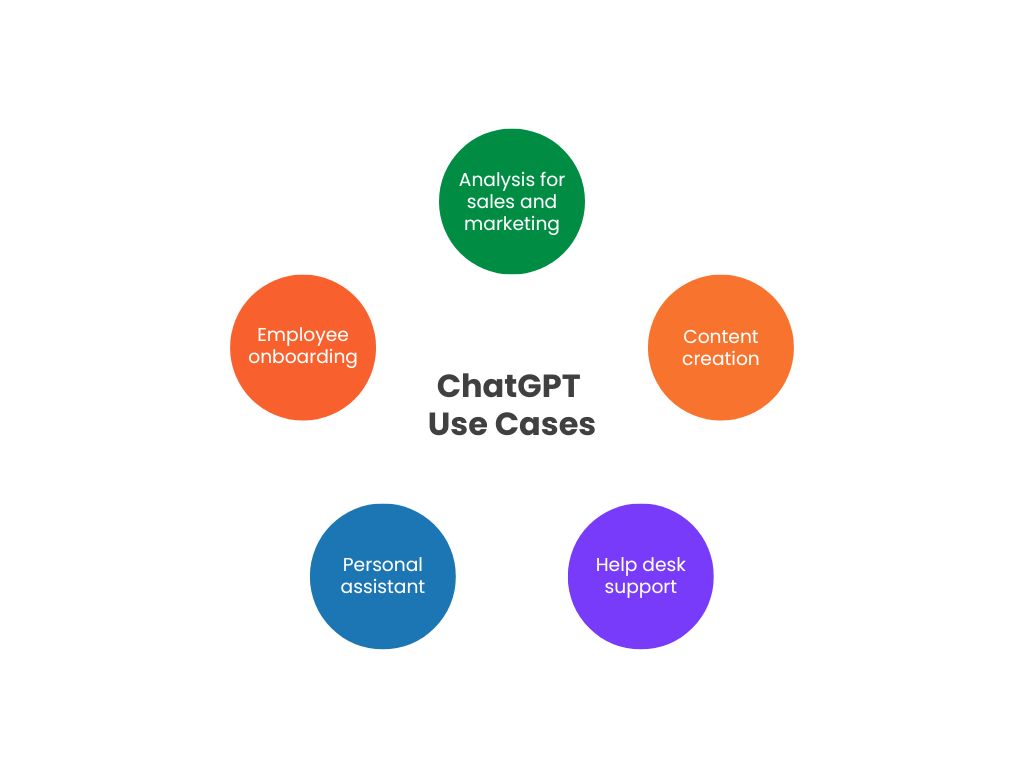
1. Help desk support for customer service teams
ChatGPT’s penchant for chattiness makes it a handy addition to your customer service desk. ChatGPT upgrades outdated FAQ databases where users must use precise phrasing to find answers. Instead, it can evaluate a question’s context to pinpoint what a customer means to say vs. the actual words they use. ChatGPT can provide answers to frequently asked questions, troubleshoot problems, and even handle simple tasks, such as scheduling appointments or placing orders.
Who will best appreciate the robotization of customer service may fall into a generational divide. Customers who have enjoyed more trips around the sun tend to appreciate help from humans. Younger generations would prefer to have their teeth drilled than phone into a support line—they fully expect self-service options. Considering the fact that “dental work” frequently appears on lists of our top fears—this speaks volumes. Use ChatGPT-powered chatbots to shoulder some of the customer service workloads, and send callers who prefer human conversation over to staffers.
2. Personal assistant for project managers
Searching for information is a hidden productivity slayer. One study reveals that 4 out of 5 employees struggle to find the right document when prompted by a manager. The data-foraging issue is so draining, that McKinsey estimates staffers spend a full workday each week scouring archives and file stores for vital information.
ChatGPT makes it easier to find the right information just in time. Instead of clicking through endless folder trees or trying to perfect your search query, you can simply ask. With ChatGPT, searching for information becomes more conversational than transactional.
Additionally, ChatGPT can help patch up other time drains. Use it to:
- Develop project timelines.
- Summarize a meeting’s action items from Teams or Zoom transcripts. Some apps can even “sit in” on meetings to generate live notes.
- Translate summaries into other languages.
- Send task or appointment reminders.
- Help document procedures.
- Pare down long memos into a bite-sized Spark Notes version.
To take advantage of this use case, consider situations where employees spend far too much time battling with information overload. In these instances, ChatGPT can wring out the highlights, allowing team members to ditch the drudge work.
3. Customer sentiment analysis for sales and marketing
Use ChatGPT to dig into customer impressions of your product or service. In this use case, you’ll tap into ChatGPT’s conversational chops. It can analyze a list of Tweets or a collection of online reviews to rate satisfaction levels.
ChatGPT can classify testimonials and feedback as good or bad. You can find out what customers love about your product and what aspects need refining. You can also determine if one bad apple is indicative of a larger issue, or if the experience is just an anomaly.
The benefit of supercharging this responsibility with ChatGPT is time, of course. You can spend months thumbing through a flood of feedback, only to find you’re weeks behind in solving a harmful issue. ChatGPT speeds up analysis, helping you address simmering issues before they boil over. Similarly, you can use the technology to uncover potential growth opportunities before your competitors nab it away from you.
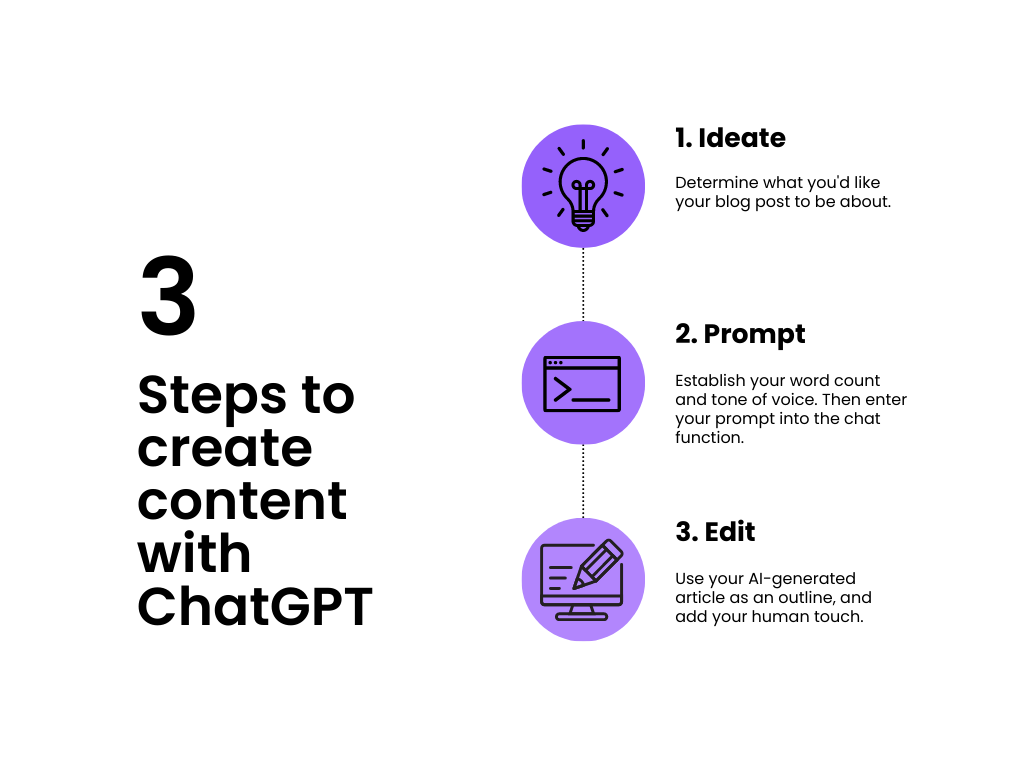
4. Employee training for HR managers
Organizations are also using ChatGPT-infused technologies to guide their onboarding process. Some apps can transform a script generated by a team member or ChatGPT into a spoken video led by an AI talking head. While the strategy might not beat personalized training by an in-house expert, it certainly has a leg up over stagnant PDFs or PowerPoints.
Similarly, you can train ChatGPT on a database of in-house training materials. Turn an onboarding handbook into a tour guide team members can converse with. Instead of just reading idly, they can ask personalized questions and request clarification on the elements they find confusing.
5. Content creation for advertising and marketing
The persistent rising tide of content begs all employees to become a wordsmith. Engineers pen their thoughts for a case study. Sales managers prepare call scripts. For team members without a knack for writing, staring at a blank screen can feel incredibly paralyzing.
ChatGPT can help get the ball rolling by sitting in as a brainstorming partner. Bounce your ideas off it and ask it to help you fine-tune your thoughts. It can even generate a rough draft of blogs, social media posts, and email newsletters for you to pluck and poke to perfection.
Despite ChatGPT’s far-reaching capabilities, it’s not the be-all and end-all espoused by its ravenous fans. Societal trends indicate a shift towards authenticity. Social media users now flock to platforms that serve looser, more candid content vs. platforms that peddle blatantly over-curated aesthetics. For some, marketing that embraces a personal connection is a pivotal factor in the buying decision. Therefore, overloading all of your touchpoints with generative AI doesn’t necessarily equal an instant win.
The right ChatGPT strategy involves a tight understanding of your customers. What areas of your business can ChatGPT accelerate response times? What areas demand a white-glove approach? Success with ChatGPT lies in the cut where generative AI and human-guided touchpoints can work side by side. In this era of hyperautomation and Hyper-Productivity, AI might be necessary for some of your everyday tasks. There are no challenges with hyperautomation when AI is involved. Artificial intelligence vs intelligent automation? Why pit the two against each other when they’re a powerhouse combined?
